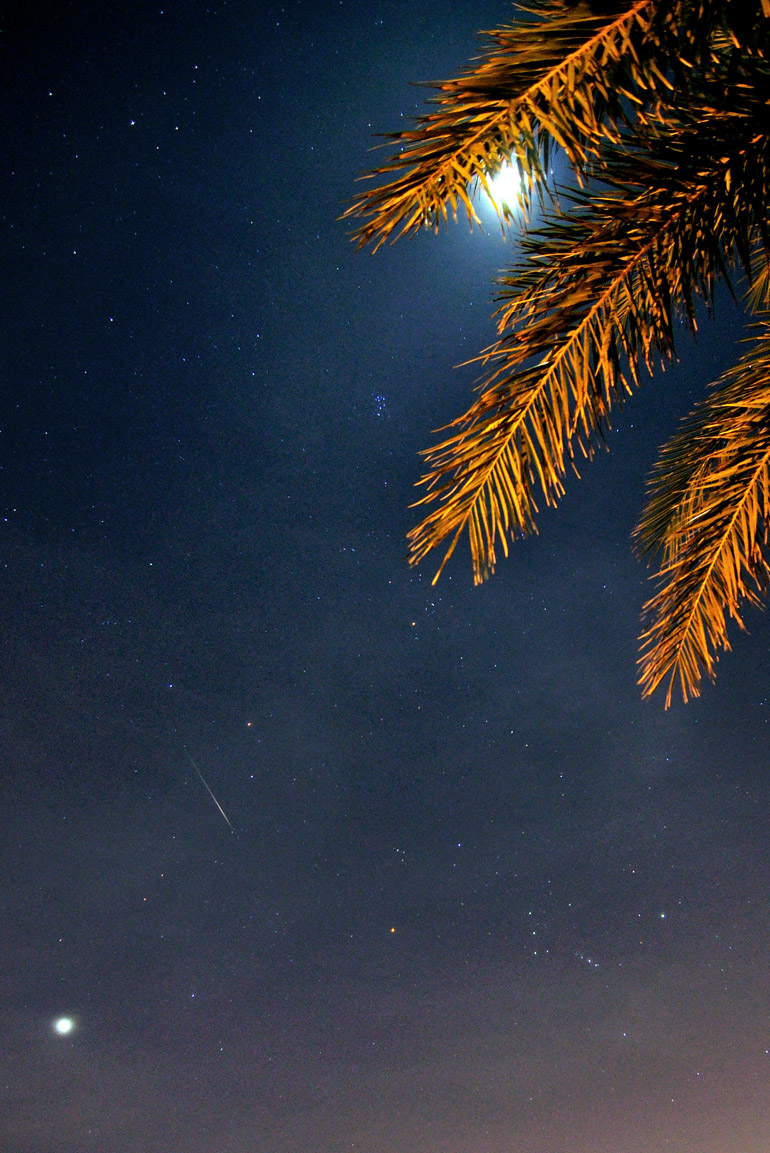
The moon's bright light was creating nasty lens flare, so I finally got the idea to use this palm tree as shade. That did the trick, effectively eliminating the artifacts my camera was picking up. Shot vertically, this photograph captures the moon at top and Venus in the lower left. The meteor, of course, is just to the right and slightly above the planet. I cropped out the horizon because of too much nasty, yellow artificial light from a senior center at Wickham Park in Melbourne. In general, the quality of this image is crap because of the light - and all the noise it adds.
Light at night is difficult to escape here on the Space Coast. The regional infrastructure is oriented from north to south, with few major roadways leading westward, into the more rural inland parts. For stargazers, artificial light obstructs the view of the heavens, and any venture to get away from it is time-consuming and, of course, gas-guzzling.
The peak period for viewing meteors in the Perseids shower came in the early half of this week. And the lights of Melbourne were my bane. With little spare time for seeing shooting stars this week, I settled for stepping outside my apartment when I had the chance. The brightest meteors, I knew, would be visible despite the glare.
I had been unsuccessful in my viewing attempts until early Wednesday morning, around 3, when a glance at the southeastern sky picked up a giant fireball streaking downward. It was the most brilliant one I had ever seen.
Knowing the shower was technically scheduled to peak before dawn Wednesday (despite the moon's light creating even more of a viewing problem after midnight), I thought that meteor was just the tip of the iceberg. So I grabbed my camera to try shooting a shooting star for the first time.
But meteors are the most difficult celestial phenomenon I have attempted to photograph. With such bright lights from the city, the exposure can't be long, and with relatively dim light from the meteors, the camera's aperture must be open wide in order to capture any of their light. In an area far from cities, the task would be considerably easier.
But in my case, I stood under the stars - the humidity wrapping itself around me and the mosquitoes sucking my blood as usual - and I snapped 421 shots, filling a 4-gigabyte memory card. For each image, the shutter was open for eight seconds. Any more, and they would have been overexposed.
All told, I managed four or five exposures with some sort of streak from a meteor. The above - taken at 5:46, more than an hour before sunrise - is probably the best. It's one of the few I shot vertically to capture both the moon and Venus, too.
None of them, however, live up to the hype created when I saw the giant fireball hours earlier. That's just how things work, though.



No comments:
Post a Comment